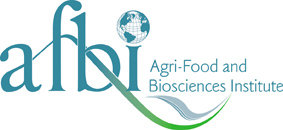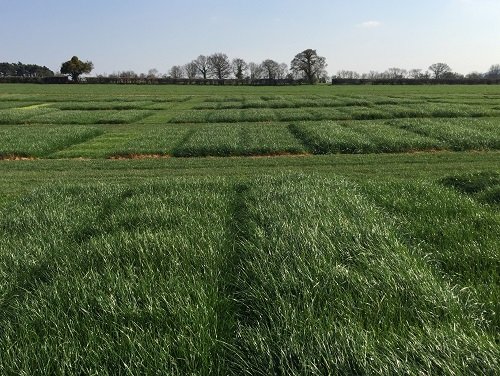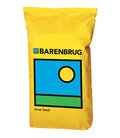 Herbage seed production is a high risk, high reward crop which can yield gross margins more than £1,000/Ha for good mixed farmers with a keen eye for detail. Over 8,000 Ha of herbage seed is grown annually in the UK for the agricultural and amenity markets via a network of over 100 growers.
Herbage seed production is a high risk, high reward crop which can yield gross margins more than £1,000/Ha for good mixed farmers with a keen eye for detail. Over 8,000 Ha of herbage seed is grown annually in the UK for the agricultural and amenity markets via a network of over 100 growers.
Growers who produce herbage seed have an excellent control of Blackgrass and Vulpia for fields selected for herbage seed production. Herbage seed production is quite different to producing a forage crop, in that rather than producing lots of vegetation we want to promote tillering in each plant which then in turn produce seed heads. Plant populations are therefore a lot lower than for forage crops, typically only 10 kgs/ha is used to establish a seed crop. A four-year break must be left between grass crops. Isolation from other grass crops is also key, if similar ploidy (diploid and tetraploid) is grown next to each other, isolation measures need to be implemented to prevent cross pollination occurring.
Drilling usually takes place in the autumn and all crops should be established by the end of September. Harvesting takes place in the following July/August dependant on the heading date of the variety being produced. There is also an option to drill in the spring using a companion crop such as spring barley . After the barley has been harvested, the grass crop will be visible in the stubble which can then be grazed using sheep from October - February dependant on the ground conditions.
The crop is inspected by a licensed seed inspector prior to harvest. The inspector will look at different plants in the standing crop and check that the correct isolations are in place for neighbouring crops. Harvesting takes place over two consecutive years with an option on a third year if the crop is deemed clean enough at the end of the second-year harvest. Harvesting techniques vary between two systems, mow when the seed is around 45% moisture content and dry in field for a period of 5-6 days and pick up using a draper header or use a stripper header direct into the standing crop when the moisture content is around 30%. Crop drying is the most critical and important part of the process, a drying floor must be used to dry the crop. The crop must be loaded onto the floor at a depth of no more than 1 metre deep and ambient air blown through the crop. The crop must be turned at least once per day to allow even drying. The moisture content of the seed must be below 14%, anything above this will lead to germination issues and rejection of the crop which will make it worthless. Once the crop is below 14% the seed can be taken off the drying floor and stored in a barn in a heap like grain storage. Monitoring of the heap for temperature and moisture content post drying is also a critical part of the process.
Once the crop is dry (or conditioned) an as-grown sample will be taken to confirm the moisture content, purity, and germination. This test will also highlight any weed seed issues.
Crop cleaning takes place from August through until early April. The as-grown seed is collected and taken to a cleaning plant where the crop is cleaned, packed, and certified. The crop passes over a series of sieves and cleaning cylinders to remove inert matter such as stick, stalk and chaff along with some weed seed species. Seed lots are created and samples of each are sent to a licensed testing laboratory, where each lot is examined under a standard known as HVS (Higher Voluntary Standard) for herbage seed prior to certification. The grower pays for the crop to be cleaned based on the purity of the as-grown result. This is to encourage growers to produce clean, weed free samples.
Growers are paid in three instalments in October, January, and May on a 30%, 30% 40% basis.
Producing herbage seed provides a good two- or three-year break crop, provides improved soil health and provides forage options for livestock. If carried out correctly herbage seed production provides an excellent profitable break crop option.
Grow grass seed for Barenbrug UK, as one of our exclusive UK growers. Find out more and meet Richard Turner to see how we can help you.







